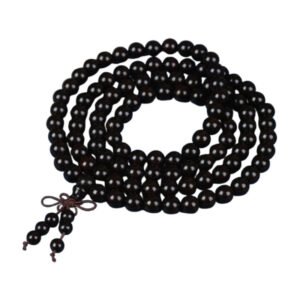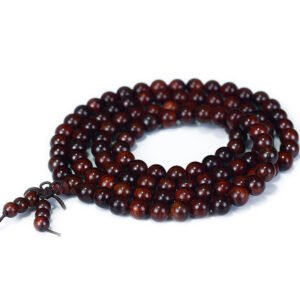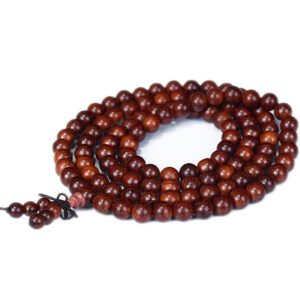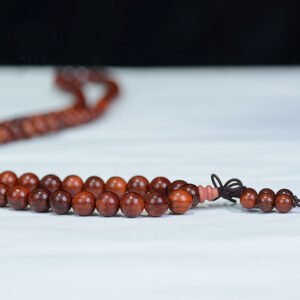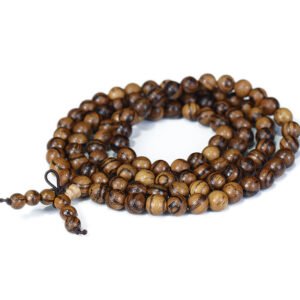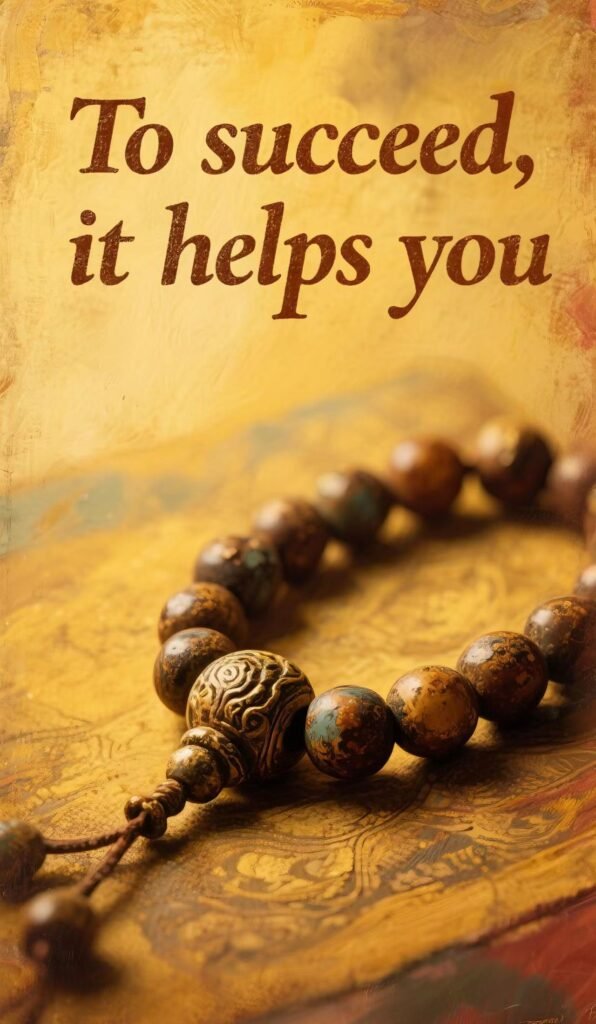Buddhist beads, as a commonly used tool in Buddhist practice, are not only counting tools, but also contain profound cultural and religious significance. Many people are curious why there are various changes in the number of Buddhist beads? What are the hidden meanings behind each quantity? Today, let’s delve into the mystery of the number of Buddhist beads together.
In Buddhist culture, the number of Buddhist beads has rich symbolic meanings. Common numbers of beads include 14, 18, 21, 27, 36, 42, 54, 108, and 1080, with different numbers having different meanings.
The 14 Buddhist beads represent the same compassion of Guanyin Bodhisattva and all sentient beings in the Ten Directions, Three Realms, Six Paths, etc., enabling all sentient beings to obtain fourteen fearless merits. These fourteen fearlessness give sentient beings the courage and strength to face life’s difficulties, symbolizing compassion and protection. For example, when people encounter difficulties and obstacles, wearing a bracelet with 14 Buddhist beads, they will feel the compassion and protection of Guanyin Bodhisattva from the depths of their hearts, thus strengthening their beliefs and bravely moving forward.
The 18 Buddhist beads are commonly known as the “Eighteen Sons”, which refers to the “Eighteen Realms”, namely the six senses (eyes, ears, nose, tongue, body, and mind), six dust senses (color, sound, fragrance, taste, touch, and Dharma), and six consciousness senses (eyes, ears, nose, tongue, body, and consciousness). It represents the cognitive system of Buddhism towards all things in the world. Wearing 18 Buddhist beads, it constantly reminds practitioners to observe their own relationship with the outside world, perceive the essence of the world, and achieve inner peace and wisdom.
21 Buddhist beads represent the Ten Realms, Ten Paramitas, and 21 ranks of Buddha fruit. These twenty-one ranks symbolize the process of practitioners gradually transitioning from ordinary beings to the fruit of Buddha. Each rank represents a stage of cultivation and signifies the improvement of wisdom, compassion, and morality for practitioners. Wearing 21 Buddhist beads symbolizes following the teachings of the Buddha and gradually moving towards the realm of liberation and enlightenment.
The 27 Buddhist beads represent the twenty-seven sages of Mahayana’s four direction fruit practice, that is, the “eighteen haves” of the first four direction three fruits and the “nine have nots” of the fourth arahanguo. These 27 sages represent the different realms and levels of wisdom that practitioners have achieved in their pursuit of liberation. Wearing 27 Buddhist beads reminds practitioners to practice diligently and approach the realms of these sages.
36 Buddhist beads are usually believed to be for ease of carrying, so they are divided into 108 beads to form 36 beads, which contain the principle of seeing the big through the small, and are therefore the same as 108 beads. It also symbolizes the elimination of 108 kinds of troubles, allowing practitioners to use these 36 Buddhist beads in their daily lives, no matter where they are, to remind themselves to maintain inner peace and not be disturbed by troubles.
42 Buddhist beads represent the forty second stages of Bodhisattva’s cultivation process, namely the ten stops, ten movements, ten reversals, ten realms, equal enlightenment, and wonderful enlightenment. These forty-two levels depict in detail the long process of Bodhisattva’s cultivation, from the initial state of mind to the ultimate state of perfect enlightenment, each level is an important symbol of spiritual growth and wisdom opening for practitioners. Wearing 42 Buddhist beads symbolizes the practitioner’s determination to follow the path of Bodhisattva’s practice, continuously improve themselves, and reach the perfect Buddha fruit.
54 Buddhist beads represent the 54 ranks in the process of Bodhisattva cultivation, including the Ten Faith, Ten Stay, Ten Action, Ten Return, Ten Earthly Fifty Levels, plus the Four Good Roots. These rankings represent the achievements and realm improvement of practitioners at different stages of their practice. Wearing 54 Buddhist beads means that practitioners are constantly progressing on the path of pursuing enlightenment, gradually accumulating merit and wisdom.
108 Buddhist beads are the most common number, which is used to indicate the verification of the Hundred and Eight Samadhi, and to eliminate 108 kinds of afflictions, so that the body and mind can reach a state of silence. These 108 afflictions cover various negative emotions and mental barriers that humans face in life, such as greed, anger, and ignorance. By reciting 108 Buddhist beads, practitioners constantly reflect and purify their souls, gradually breaking free from the shackles of afflictions and moving towards inner peace and liberation.
1080 Buddhist beads represent 108 kinds of afflictions in each of the ten realms, synthesizing 1080 kinds of afflictions. This type of Buddhist bead, due to its length, is only used by a very small number of eminent monks and hermits, or by famous monks as decoration during major religious ceremonies. In addition, very few people use it. It symbolizes a comprehensive understanding and transcendence of all the troubles in the world, and only those with a high level of cultivation can master and comprehend the profound meaning behind it.
The deep cultural connotations behind the quantity of Buddhist beads
The diversity of the number of Buddhist beads reflects the richness of Buddhist practice methods and doctrines. Different stages and methods of cultivation correspond to different quantities of Buddhist beads, helping practitioners to better focus on their practice and achieve inner peace and liberation. At the same time, the number of Buddhist beads is closely related to the Buddhist worldview and outlook on life, reflecting Buddhism’s profound understanding of the essence of the world and the meaning of life.
The significance of the number of Buddhist beads is profound and complex, with each number carrying unique cultural and religious connotations. Whether as practitioners or those interested in Buddhist culture, understanding the significance of the number of Buddhist beads can help us better understand the vastness and profundity of Buddhism, draw wisdom and strength from it, and pursue inner peace and harmony in our lives.


